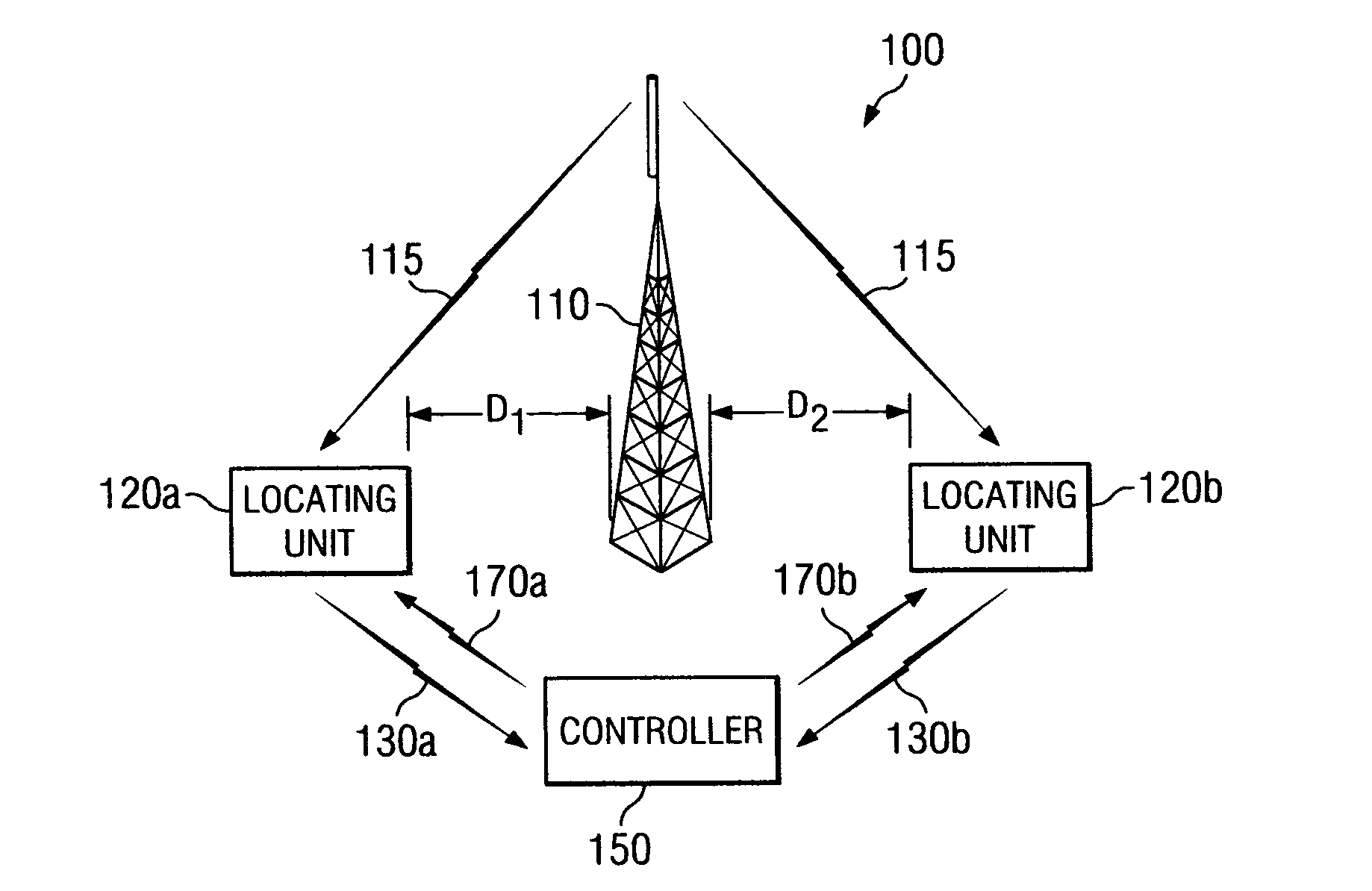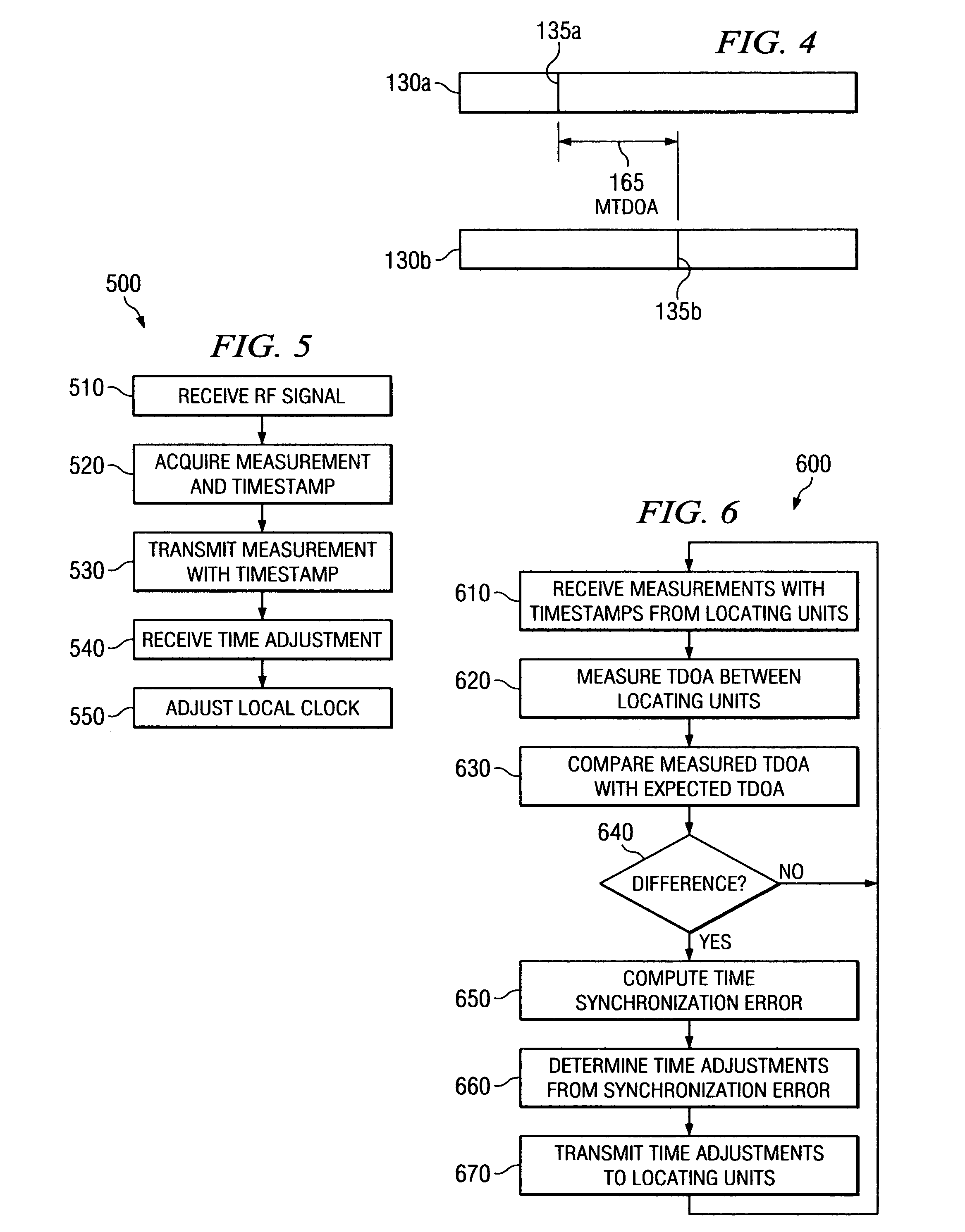Time synchronization system and method for synchronizing locating units within a communication system using a known external signal
a time synchronization and communication system technology, applied in multiplex communication, synchronisation arrangement, instruments, etc., can solve the problems of different propagation delays in inbound and outbound traffic, the obvious disadvantage of dedicated cabling, and the inability to achieve highly accurate time synchronization
- Summary
- Abstract
- Description
- Claims
- Application Information
AI Technical Summary
Benefits of technology
Problems solved by technology
Method used
Image
Examples
Embodiment Construction
[0017]FIG. 1 is a schematic block diagram illustrating an exemplary and simplified time synchronization system 100. The time synchronization system 100 includes a transmitter 110, two or more locating units 120a and 120b and a controller 150. The locating units 120a and 120b form at least a part of a radio communication system. For example, the radio communication system may include a series of receivers located within an area networked (e.g., via the Internet) together with the controller 150. In an exemplary embodiment, the locating units 120a and 120b operate in a signal reception mode to locate radio devices (not shown) within the radio communication system using a time difference of arrival (TDOA) positioning method. One example of a radio device is a cellular telephone.
[0018]The transmitter 110 and the locating units 120a and 120b are positioned within the time synchronization system 100 at known geographical locations, which may be fixed or variable. In embodiments where the ...
PUM
 Login to View More
Login to View More Abstract
Description
Claims
Application Information
 Login to View More
Login to View More - R&D
- Intellectual Property
- Life Sciences
- Materials
- Tech Scout
- Unparalleled Data Quality
- Higher Quality Content
- 60% Fewer Hallucinations
Browse by: Latest US Patents, China's latest patents, Technical Efficacy Thesaurus, Application Domain, Technology Topic, Popular Technical Reports.
© 2025 PatSnap. All rights reserved.Legal|Privacy policy|Modern Slavery Act Transparency Statement|Sitemap|About US| Contact US: help@patsnap.com



